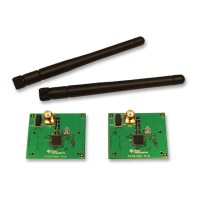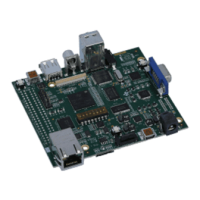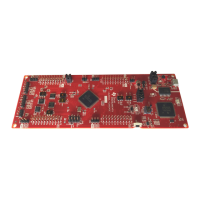Boot Loader
IDLE state to contain a command header but does not look for a command unless the state is IDLE.
This protocol allows an application that is unaware of the command header to download a DFU-
wrapped binary image using a standard sequence of multiple DFU_DNLOAD and DFU_GETSTATUS
requests without the need to insert additional command headers during the download.
The commands defined here and their parameter block structures can be found in header file
usbdfu.h provided with TivaWare. In all cases where multi-byte numbers are specified, the num-
bers are stored in little-endian format with the least significant byte in the lowest addressed location.
The following definitions specify the command byte ordering unambiguously but care must be taken
to ensure correct byte swapping if using the command structure types defined in usbdfu.h on big-
endian systems.
DFU_CMD_PROG This command is used to provide the USB boot loader with the address at which
the next download should be written and the total length of the firmware image
that follows. This structure forms the header that is written to the DFU-wrapped
file generated by the dfuwrap tool.
The start address is provided in terms of 1024-byte flash blocks. To convert a
byte address to a block address, merely divide by 1024. The start address must
always be on a 1024-byte boundary.
This command may be followed by up to 1016 bytes of firmware image data,
this number being the maximum transfer size minus the 8 bytes of the command
structure.
The format of the command is as follows:
uint8_t pui8Data[8];
pui8Data[0] = DFU_CMD_PROG (0x01)
pui8Data[1] = Reserved - set to 0x00
pui8Data[2] = Start Block Number [7:0];
pui8Data[3] = Start Block Number [15:8];
pui8Data[4] = Image Size [7:0];
pui8Data[5] = Image Size [15:8];
pui8Data[6] = Image Size [23:16];
pui8Data[7] = Image Size [31:24];
April 8, 2013 17

